
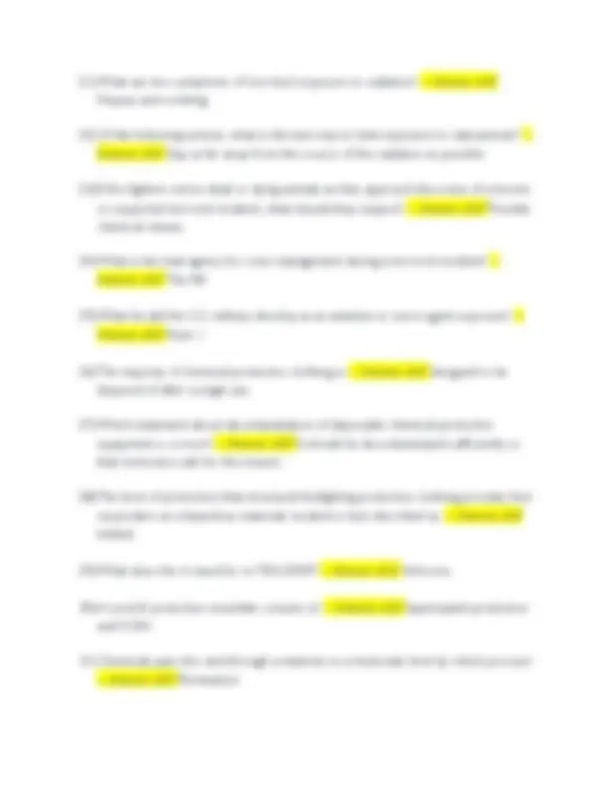
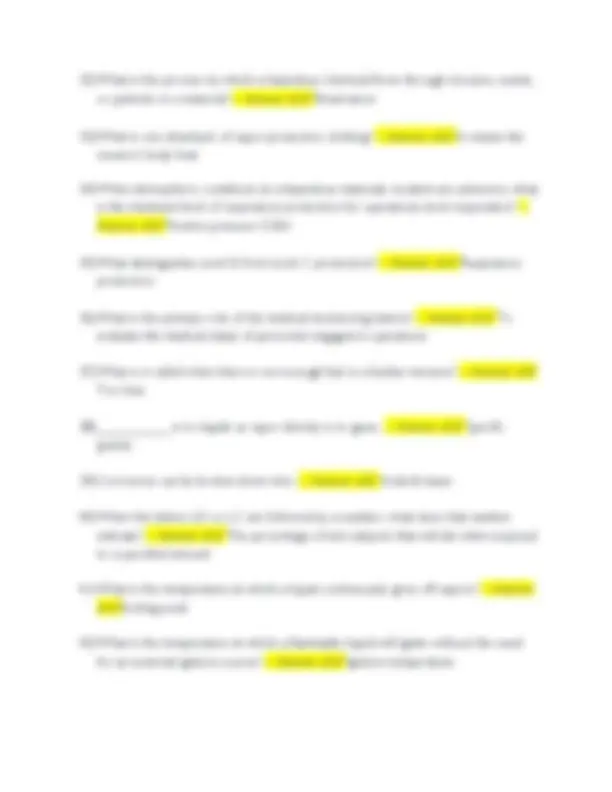
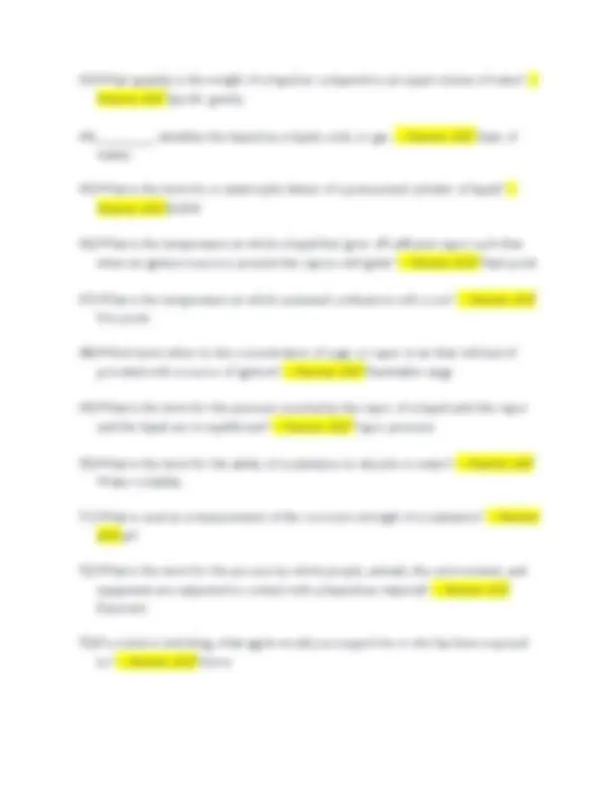
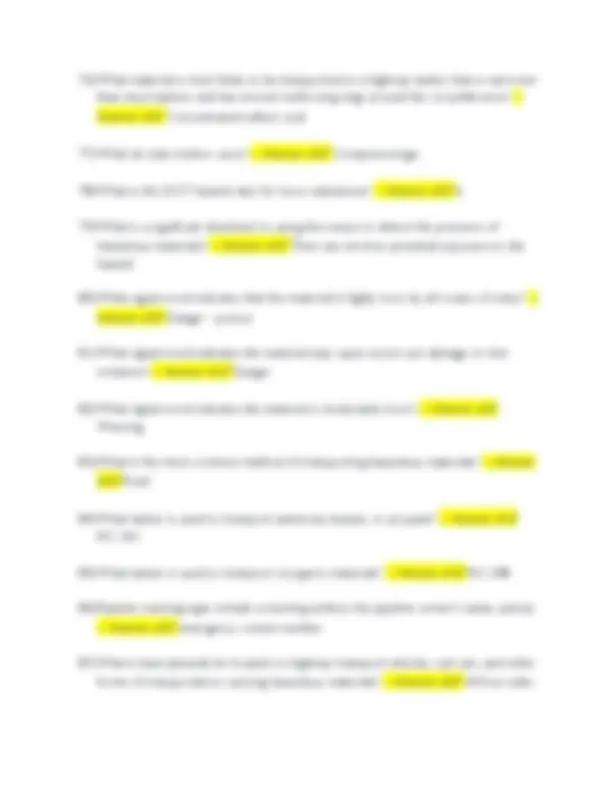
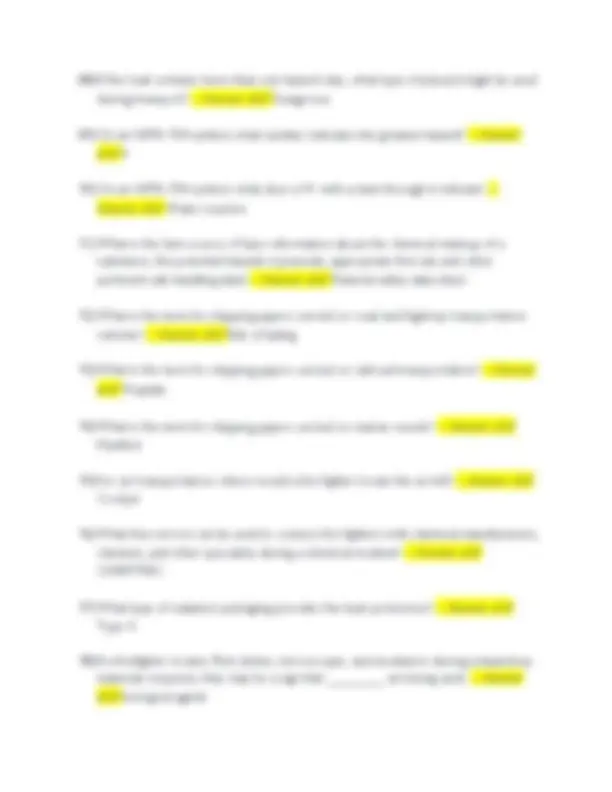
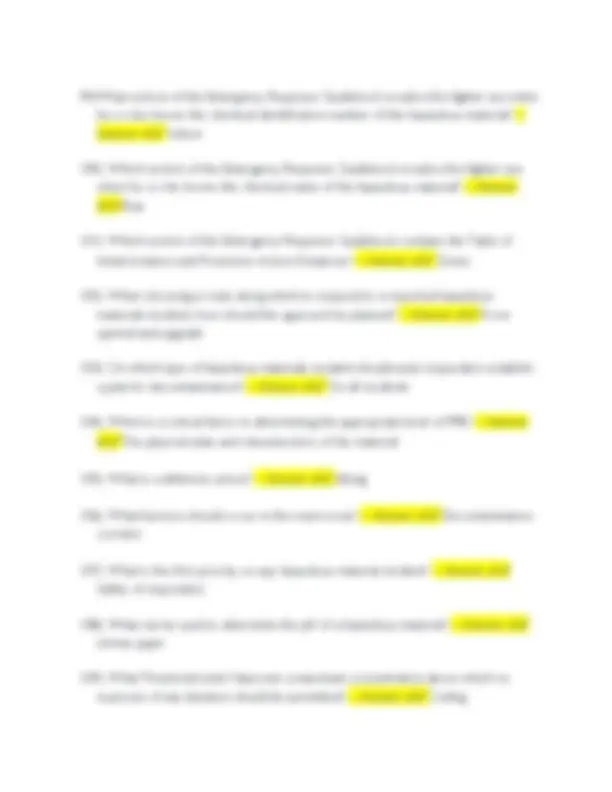
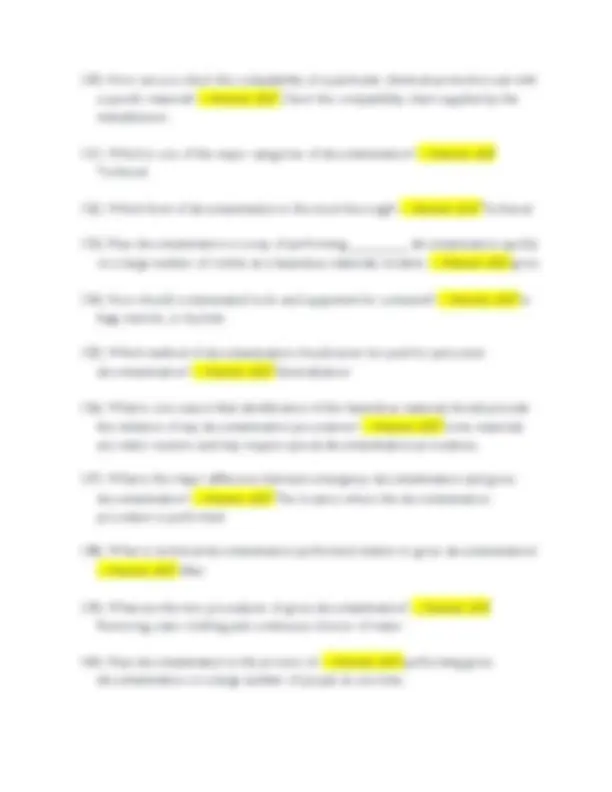
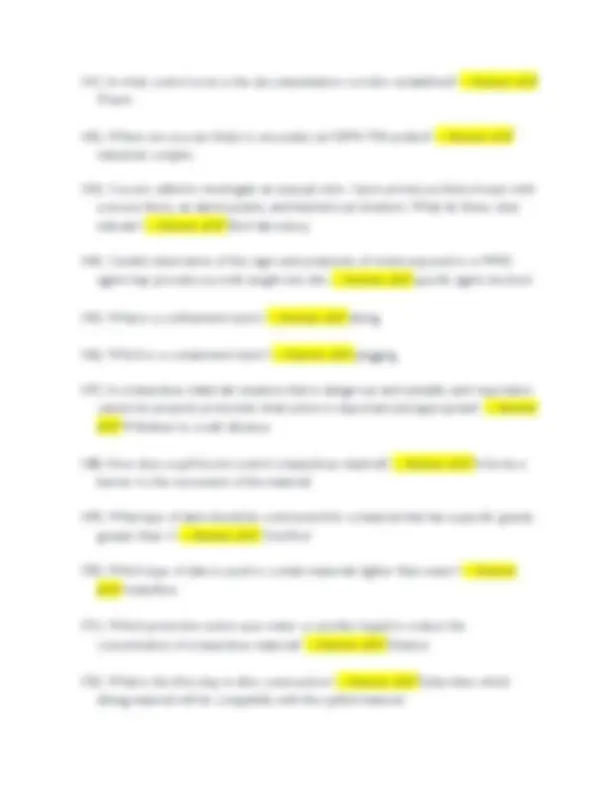
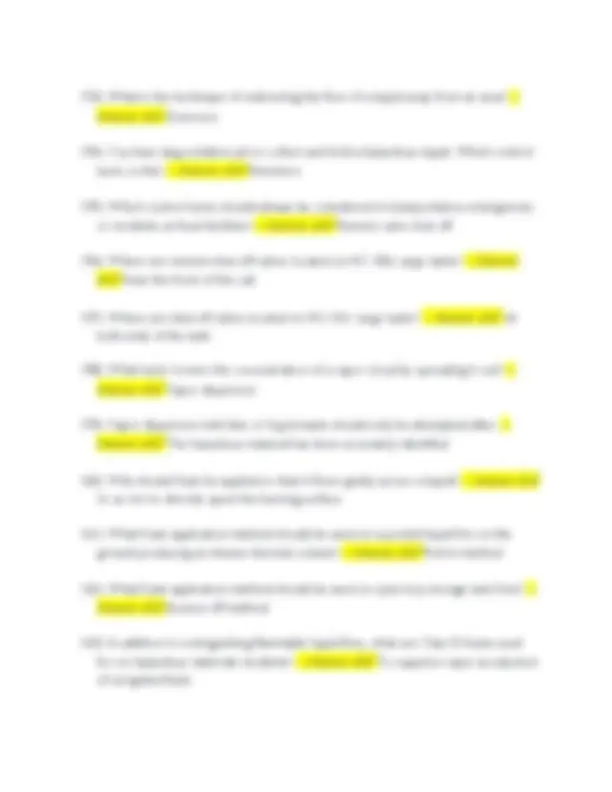
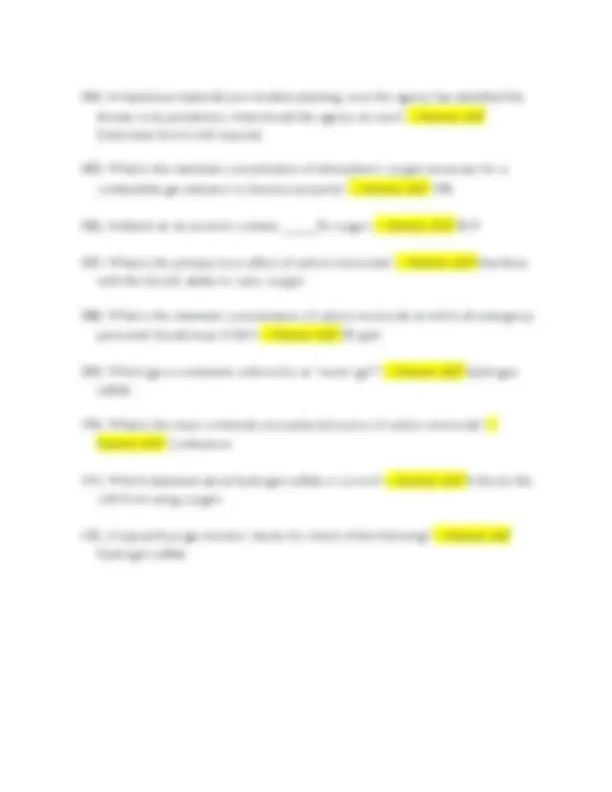


Study with the several resources on Docsity

Earn points by helping other students or get them with a premium plan


Prepare for your exams
Study with the several resources on Docsity

Earn points to download
Earn points by helping other students or get them with a premium plan
Community
Ask the community for help and clear up your study doubts
Discover the best universities in your country according to Docsity users
Free resources
Download our free guides on studying techniques, anxiety management strategies, and thesis advice from Docsity tutors
This study guide provides a comprehensive set of questions and answers covering key concepts related to hazardous materials response. It covers topics such as control zones, personal protective equipment, size-up, isolation perimeters, incident levels, decontamination, shelter-in-place, heat exhaustion, hypothermia, terrorism, radiation exposure, chemical protective clothing, and more. The guide is designed to help students prepare for exams and gain a deeper understanding of hazardous materials safety and response procedures.
Typology: Exams
1 / 18

This page cannot be seen from the preview
Don't miss anything!










